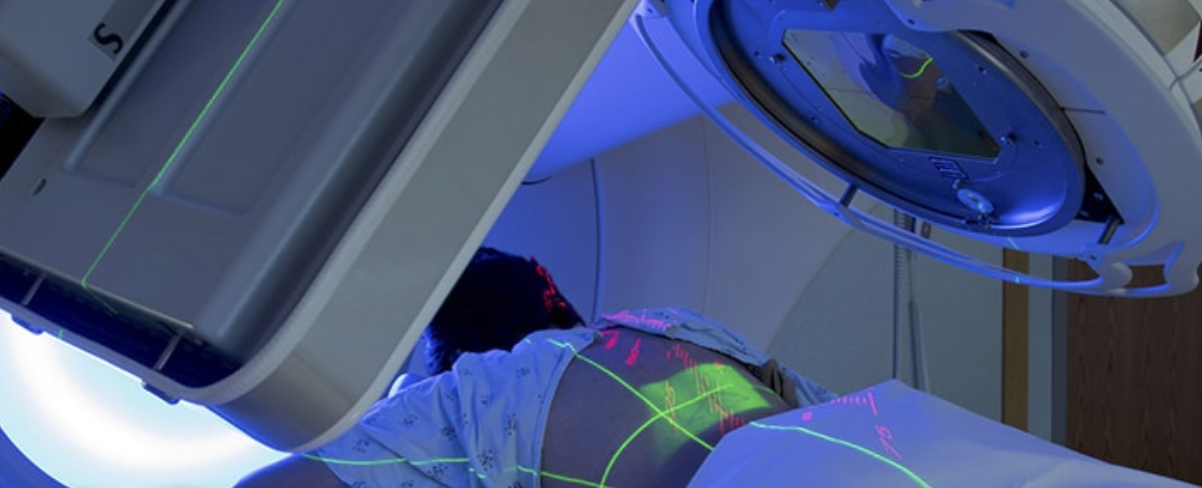Roughly one-third of patients had a complete pain response at 3 and 6 months.
Two doses of palliative stereotactic body radiotherapy (SBRT) were more likely to completely eliminate spinal pain in patients with metastatic cancer compared to conventional radiotherapy (CRT), a phase II/III trial found.
In the study of over 200 patients with painful spinal lesions, complete pain response at 3 months was significantly improved in patients who received SBRT compared to controls (35% vs 15%, P<0.001), which was sustained at 6 months (32% vs 16%, P=0.004), reported Arjun Sahgal, MD, of Sunnybrook Odette Cancer Centre in Toronto.
“This is the first phase III randomized trial to show that dose escalation with modern radiotherapy techniques improves pain outcomes for patients with spinal metastases,” he said at a press briefing for the virtual American Society for Radiation Oncology (ASTRO) annual meeting. “Our regimen of 24 Gy in two SBRT fractions was safe, non-destabilizing, and associated with better patient financial perception.”
On multivariate analysis that adjusted for age, sex, tumor type, baseline spinal instability neoplasia score (SINS), performance status, and baseline pain score, SBRT was significantly associated with a higher likelihood of complete pain response at 3 months (odds ratio [OR] 3.47, 95% CI 1.77-6.80, P=0.0003) and again at 6 months (OR 2.45, 95% CI 1.28-4.71, P=0.007).
Both groups saw a “favorable” drop in mean total SINS at 3 months (-0.94 [SD 1.69] in the SBRT group and -0.49 [1.61] in the CRT group). These scores were nearly identical at 6 months (-0.74 [1.99] in the SBRT group and -0.73 [1.86] in the CRT group).
“Our regimen of 24 Gy in two SBRT fractions was safe, non-destabilizing, and associated with better patient financial perception.”
From 2016 to 2019, the phase II/III trial from the Canadian Cancer Trials Group (CCTG) and Trans Tasman Radiation Oncology Group (TROG) randomized 229 patients with painful spinal metastases 1:1 to either SBRT (24 Gy in two fractions) or standard palliative radiotherapy (20 Gy in five fractions). Median patient age was 63 and 65 years, respectively. Up to three contiguous spinal segments in the radiation treatment volume were allowed.
“There’s been some past controversy about this, and this is what I consider to be a practice-changing study,” said press briefing moderator Sue Yom, MD, of the University of California San Francisco.
“What I find really fascinating about this study is that on the quality-of-life surveys that were filled out by the patients, the financial perception of those receiving SBRT was superior, and this indicates that even a difference between two treatments and five treatments was a real quantifiable difference,” she said.
Patients in the SBRT group saw improved financial-oriented quality of life on the EORTC QLQ-C30 at 1 month (35% vs 23%) and were less likely to report worsening (15% vs 29%; P=0.034).
“Being able to have fewer treatments is significant to patients and that is an additional buttress to this study’s importance,” said Yom.
Inclusion criteria were pain scores of at least 2 on the Brief Pain Inventory, an Eastern Cooperative Oncology Group performance status of 0-2, and lesions that were not mechanically unstable on SINS.
The study’s primary endpoint was 3-month complete pain response. At the 3-month assessment, 35% of patients in the SBRT arm had a complete pain response, 18% had a partial pain response, and 24% had no change in their pain. In the control arm, these rates were 14%, 25%, and 30%, respectively.
At the 6-month assessment, 32% of patients in the SBRT arm had a complete response, 16% had a partial response, and 27% had no change. In the control arm, these rates were 16%, 9%, and 23%, respectively.
For disease control, 92% of patients in the SBRT group had no evidence of disease at the treated site at 3 months, compared with 86% of controls, a non-significant finding. Rates at 6 months were also similar (75% vs 69%, respectively). Overall survival was no different between the two arms.
Grade ≥2 adverse events were rare in the SBRT versus CRT groups, and included dysphagia (2% vs 0%, respectively), esophagitis (4% vs 2%), nausea (1% vs 3%), pain (6% vs 8%), fatigue (0% vs 1%), and vertebral compression fracture (1% in each). Vertebral compression fracture of any grade occurred in 11% of patients in the SBRT group and 17% of controls. No treatment-related deaths occurred.
For more information contact the CyberKnife Center of Miami and talk to our experts to determine if this noninvasive cancer treatment can help you or a loved one 305-279-2900 & go to our website now to learn more www.cyberknifemiami.com

